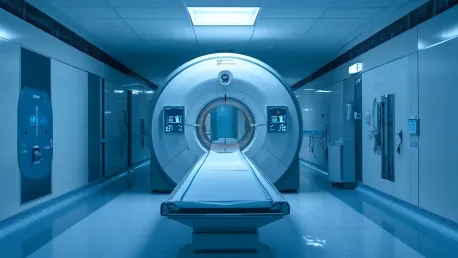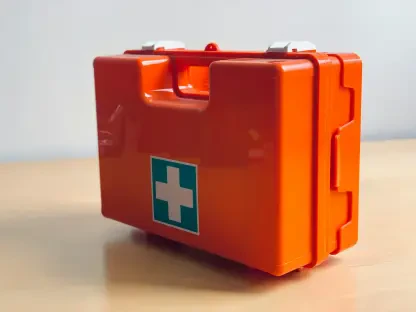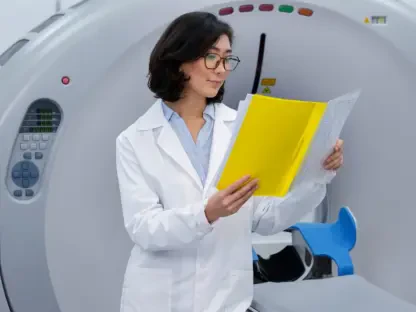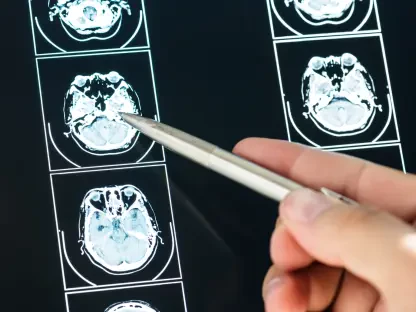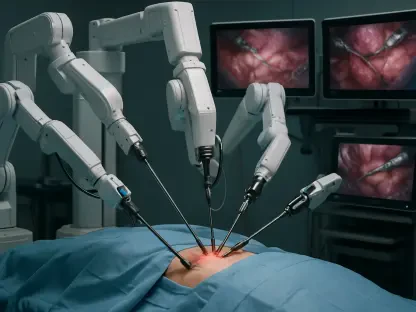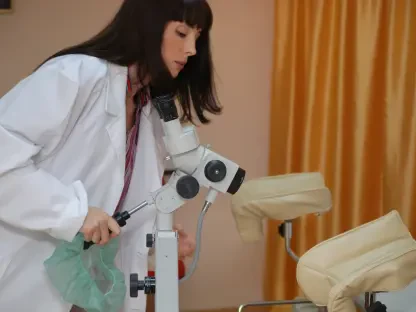The nuclear medicine and radiopharmaceuticals market is on a trajectory to remarkable growth, with projections reaching USD 11.05 billion by 2030. Such significant expansion underscores the transformative impact of advancements in healthcare and diagnostic technologies, particularly in the realms where traditional methods fall short. Nuclear medicine offers unique capabilities in the diagnosis and treatment of various diseases, making it indispensable in modern medical practice. This surge is propelled by multiple crucial factors that are reshaping the landscape of global healthcare.
Market Growth and Projections
Forecasts indicate that the nuclear medicine market will grow at a compound annual growth rate (CAGR) of 9%, achieving a significant market valuation by 2030. The United States is set to lead the charge in this expansion, thanks to its highly advanced healthcare infrastructure and higher rates of adoption for cutting-edge medical technologies. Such growth is not limited to the U.S., as regional markets like Europe and China are also contributing robustly to this acceleration. Government policies, advancements in healthcare infrastructure, and groundbreaking technological innovations in these regions are fundamental drivers of this market’s rapid progression.
In the United States, the high prevalence of chronic diseases, coupled with a robust healthcare framework, positions the country as a leader in adopting nuclear medicine technologies. European countries, particularly Germany, are not far behind, thanks to significant investments and a strong focus on personalized medicine in oncology and neurology. Meanwhile, China stands as the second-largest market globally. The country’s adoption of nuclear medicine is significantly bolstered by government initiatives like the “Healthy China 2030” policy, which aims to enhance healthcare quality and accessibility across the nation.
Application and Use Cases
Radiopharmaceuticals have critical applications spanning numerous medical fields, vastly improving the ability of healthcare providers to diagnose and treat a range of conditions. These advanced medicines are pivotal in diagnosing oncological conditions, cardiovascular diseases, and neurological disorders—areas where traditional diagnostic methods often fall short. Their versatility in addressing chronic and infectious diseases has fueled demand, providing healthcare professionals with enhanced capabilities to meet diverse patient needs.
The ability of radiopharmaceuticals to offer precise and early diagnosis is revolutionizing patient care. For example, in oncology, nuclear medicine has enabled more accurate detection of tumors and metastases, significantly enhancing treatment planning and outcomes. Cardiovascular applications have also seen substantial improvements, with nuclear medicine techniques providing detailed imaging that aids in the early detection and management of heart diseases. Furthermore, neurological applications benefit from advanced imaging technologies, offering critical insights into conditions like Alzheimer’s and Parkinson’s disease, thereby guiding timely interventions.
Regulatory and Market Approvals
Global health authorities have approved over 50 radiopharmaceuticals aimed at diagnosing and treating various chronic diseases, reflecting a substantial advancement in this field. These regulatory endorsements are crucial, as they validate the safety and efficacy of these medicines, encouraging broader adoption by healthcare practitioners and institutions. Techniques such as positron emission tomography (PET) and single-photon emission computed tomography (SPECT) have gained widespread acceptance, further solidifying the role of nuclear medicine in modern healthcare.
Regulatory approvals have not only bolstered the legitimacy of radiopharmaceuticals but have also paved the way for continuous innovations. The stringent regulatory framework ensures that new radiopharmaceuticals undergo rigorous testing and validation, fostering an environment of trust and reliability among healthcare providers and patients. This regulatory backing has accelerated the development and deployment of novel diagnostic and therapeutic applications, enhancing the overall capabilities of nuclear medicine in addressing complex medical conditions.
Market Segmentation
The nuclear medicine market is segmented based on procedure types and applications, each playing a crucial role in meeting diverse medical needs. Diagnostic imaging and targeted treatments are the primary procedure segments, essential for different healthcare purposes. Applications of these advanced medicines span various health fields, including cardiology, oncology, neurology, and thyroid disorders. This segmentation highlights the broad applicability and utility of nuclear medicine technologies in addressing specific medical challenges.
In cardiology, nuclear medicine techniques are instrumental in assessing heart function and detecting coronary artery disease, allowing for timely and accurate intervention. Oncology benefits immensely from nuclear medicine, with applications ranging from initial diagnosis to monitoring treatment efficacy. Neurology applications have also seen considerable advancements, with nuclear medicine providing critical insights into brain disorders. Additionally, thyroid conditions are effectively managed using radiopharmaceuticals, offering targeted treatment options that minimize side effects and improve patient outcomes.
Regional Insights
In the United States, market growth is driven by innovations in radiopharmaceuticals coupled with a sophisticated healthcare framework that supports advanced diagnostic and therapeutic methods. High adoption rates of cutting-edge imaging techniques are evident, reflecting the country’s commitment to leveraging nuclear medicine for improved patient care. Germany, as Europe’s healthcare giant, plays a pivotal role in adopting nuclear medicine, particularly in personalized treatments for oncology and neurology. The country’s emphasis on precision medicine ensures that nuclear medicine applications are integral to its healthcare strategy.
China, the second-largest market, sees adoption enhanced by governmental health initiatives and policies aimed at improving healthcare infrastructure and accessibility. The “Healthy China 2030” policy, for instance, underscores the nation’s commitment to advancing healthcare standards, making nuclear medicine a crucial component of its strategy. Other regions, including Japan and South Korea, are also contributing to the market’s expansion through their focus on technological innovations and healthcare improvements. These regional insights highlight the global nature of nuclear medicine’s impact, driven by unique policies and technological advancements in different parts of the world.
Technological and Research Advancements
Technological innovation is a critical factor in the growth of the nuclear medicine market. Leading companies such as Advanced Accelerator Applications S.A., IBA Molecular, and Nordion Inc. are at the forefront of research and development, introducing groundbreaking treatments and diagnostic tools. These continuous advancements ensure that the nuclear medicine market remains at the cutting edge of medical technology, offering healthcare providers and patients improved and more precise solutions.
Research and development efforts are focused on enhancing the accuracy and efficacy of nuclear medicine techniques. Innovations in imaging technologies, such as PET and SPECT, are providing deeper insights into disease mechanisms, enabling earlier and more accurate diagnoses. Additionally, advancements in therapeutic applications are paving the way for targeted treatments that minimize collateral damage to healthy tissues. These technological strides are not only improving patient outcomes but are also driving the overall growth and sustainability of the nuclear medicine market.
Future Trends and Industry Outlook
The nuclear medicine and radiopharmaceuticals market is poised for extraordinary growth, with projections estimating it will reach USD 11.05 billion by 2030. This remarkable expansion highlights the transformative impact of advances in healthcare and diagnostic technologies, especially in areas where traditional methods are inadequate. Nuclear medicine provides unique abilities in diagnosing and treating a range of diseases, making it indispensable in contemporary medical practice. This growth is driven by several key factors that are significantly reshaping global healthcare. Notably, nuclear medicine has the potential to detect diseases at earlier stages, which can lead to more effective treatments and better outcomes. Additionally, the development of new radiopharmaceuticals continues to broaden the scope of conditions that can be treated. Investment in research and technology is essential for sustaining this upward trend, along with heightened patient awareness about the benefits of these advanced medical options.
